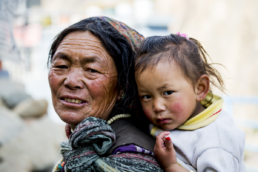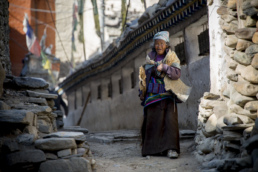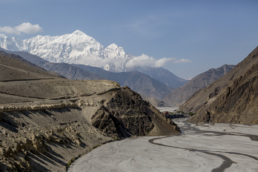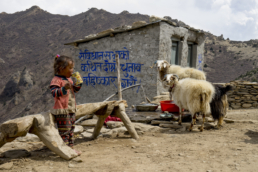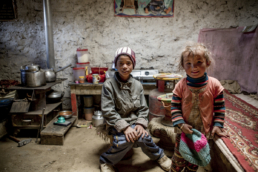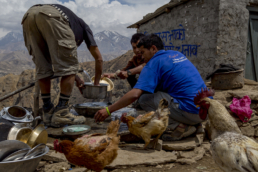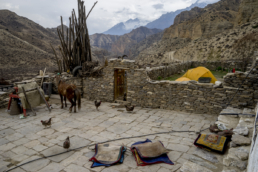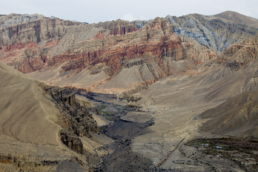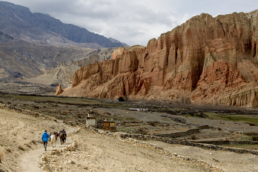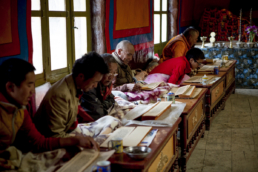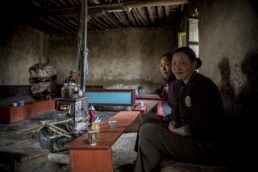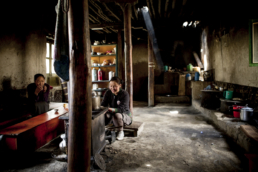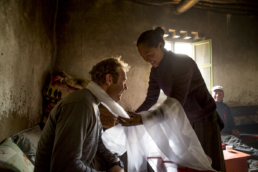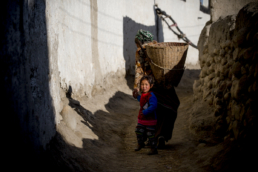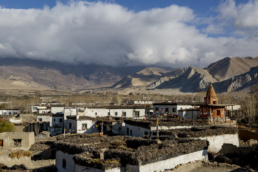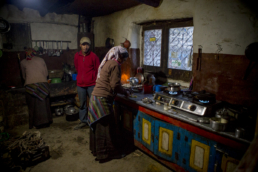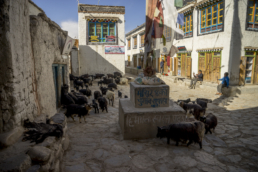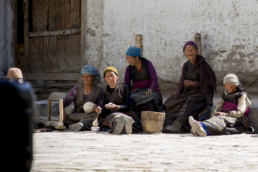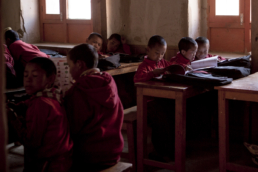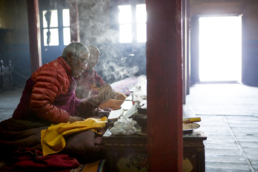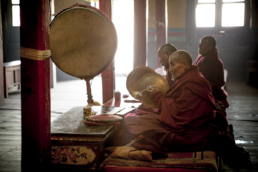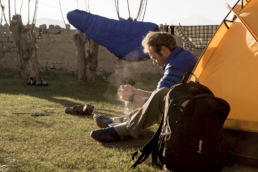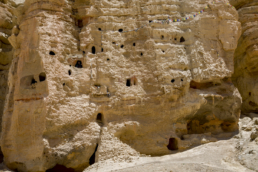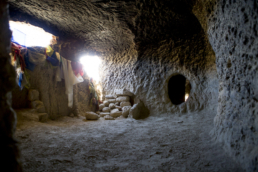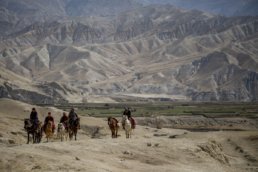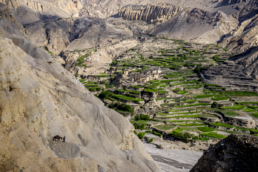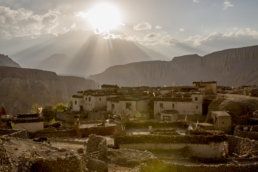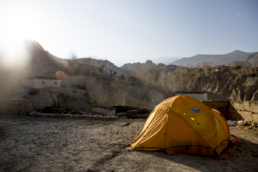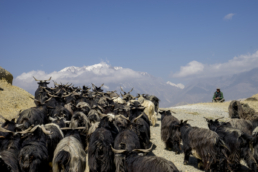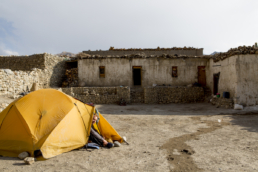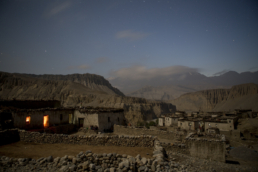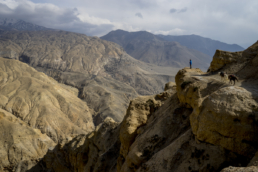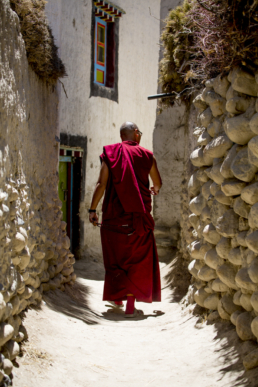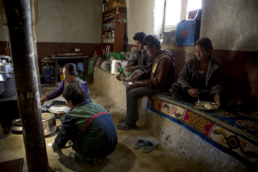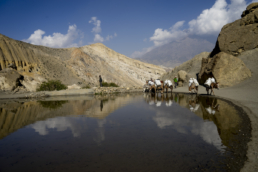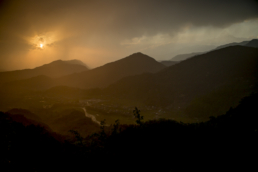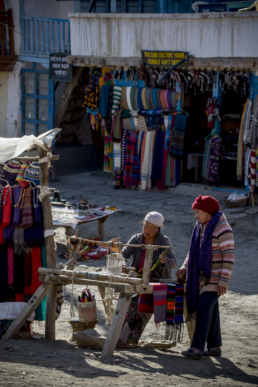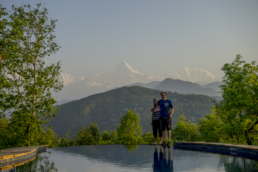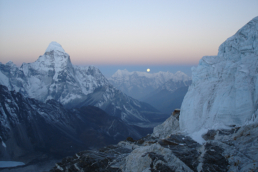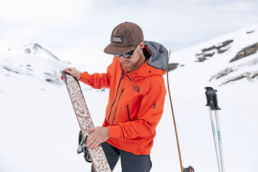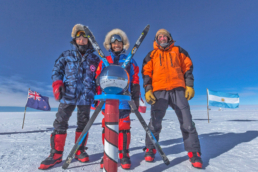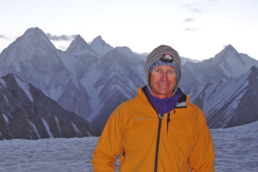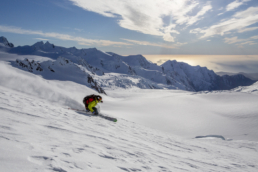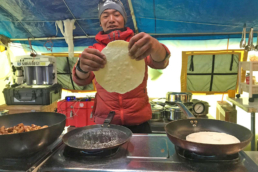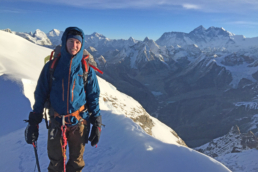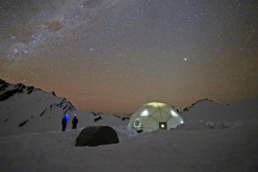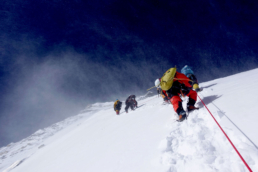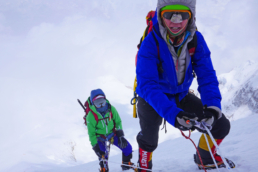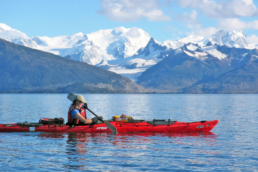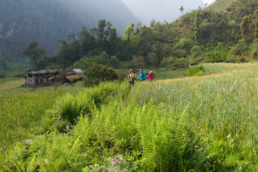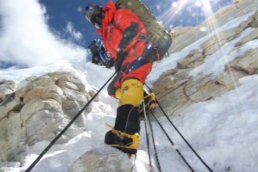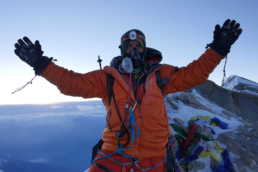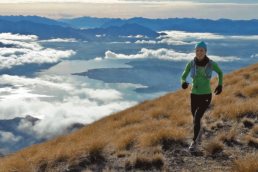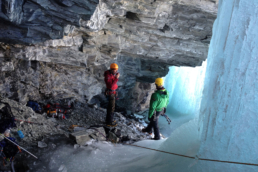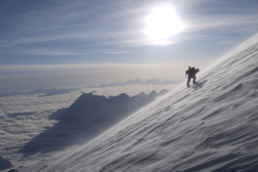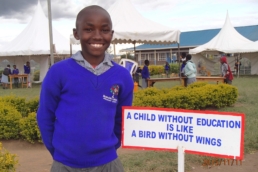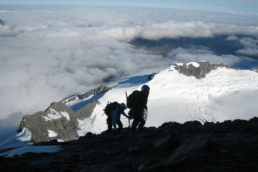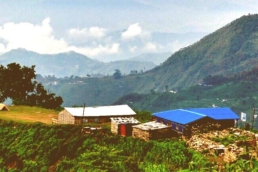Exploring The Upper Mustang, Nepal
by Guest Editor Camilla Rutherford
Photographer and adventurer Camilla Rutherford joined the AC Team on our Mustang Horse Trek into the remote reaches of Nepal’s Forbidden Kingdom. This photo journey was originally published in 2014 on her website.
Getting married is great in many ways… Aside from the whole marriage thing, you get to throw a sweet party, invite all your favourite people, get some lovely presents and take one hell of a holiday after it all! What’s not to love about a wedding!? I was pretty darn excited about the prospect of taking a ‘dream’ holiday; to do something that we’ve always wanted to do but never set aside the time or money. With no kiddies in tow yet, it was our chance to go explore. Ever since I visited Kashmir back in 2007, I’ve had a burning desire to go back to the Himalaya and to visit a country top of my to-go-to list. Nepal. As it was our honeymoon and we were supposed to be ‘relaxing’ we decided to do it the easy way. We booked a trek with my good friends at Adventure Consultants in Wanaka. It says it all in their name really. They were going to be our adventure planners. And boy did they do a 5-star job! From landing in Kathmandu, to taking off again 19 days later, we didn’t have to worry about a thing, apart from enjoying every experience & soaking up our adventure. PERFECT.
After a day in the crazy streets of Kathmandu, a night in the most lovely Tiger Mountain Lodge in Pokhara, it was time to get into those mountains. We flew in a tiny Twin Otter plane, that was straight from the 1970s, from 800m Pokhara to the airport in Jomsom at 2,800m. We went up and up and up and hardly came down… I was a bit nervous as Jomsom is dubbed one of the most dangerous airports in the world, surrounded by 8,000m peaks and volatile weather. With a thumping heart we landed smoothly down in the heart of the Himalaya.
Our first day we walked up to the small town of Kagbeni, and the entrance to the Upper Mustang National Park. Formally known as the ‘Forbidden Kingdom of Lo’ for it was illegal for any tourists to enter until 1991, and as a result this area hugely unaffected by Western influence. The route we were to take was the ‘Old Salt Route’ up to the ancient walled city of Lo Monthang, right on the border of ancient Tibet. This kingdom sets itself apart from the rest of Nepal and has its own monarchy and king.
For the past several years the Nepalese Government has been building a road up to Lo Monthang, and through to Tibet (China). This road has just been completed. It has had a lot of controversy as it has opened up 4WD jeep access all the way to China. It can be seen as a good thing, as the previously extremely isolated villages and Lo Monthang are now able to get access by vehicle to bring in supplies, access for medical needs and teachers for the schools, and begin to develop their ways with machinery etc.
On the other hand, it’s seen as sad as these ancient villages, previously untouched by Western influence, are being exposed to change and development and may lose their ancient culture and routine as more of the young move down to the cities. Before the road, it would take 5–7 days to walk to Jomsom from Lo Monthang. Walking or horseback was the only option. Not many people can afford the jeep fare, so walking still is the main method of transport. It takes 2 days by jeep to get to Jomsom from Lo Monthang. It took us 6 days walking. We camped along the way, being guided by Nema Sherpa and his team.
Each day we were blown away with how much the landscape changed. It was truly stunning. From areas looking like New Zealand, to feeling like we were walking through the Grand Canyon, this part of Nepal was remarkable. We were walking between 3,000-4,200m of altitude, and whilst you very much felt it, we were lucky enough never to get acute altitude sickness. We were camping in small villages along the way, each one as different as the next. It was so wonderful to meet the characters and locals in each town.
We visited the Lo Gheker Ghar Gompa monastery which is said to be the first Buddhist monastery in the world. Built during the 8th century and at an elevation of 3,934m it was quite amazing to visit. We were privileged enough to enter into the monastery and check out the ancient paintings, as well as be invited to hear monks reading their holy books. They would read these out loud, some shouting quite loudly for 7–8hrs a day for weeks on end.
After 6 days walking, we finally arrived at the ancient walled city of Lo Monthang. After 6 nights of camping in reasonably remote villages, it was a bit strange to arrive somewhere with some electricity and ‘paved’ streets! Buildings that were not just made of sticks and mud, and even the odd satellite dish on a roof! This city was truly beautiful and absolutely fascinating. I could have walked around narrow the streets for days watching the life of the city’s inhabitants. It was much smaller than I expected, but totally enchanting. This area has a huge Tibetan influence, with many Tibetans now living here since the take-over by China. Upper Mustang is said to be very similar to old Tibet.
A slow trickle of lukewarm water ran over my dust-encrusted hair. I was having my first shower (of sorts) in 7 days. I was surprised how little I missed showering, and how it actually felt good to go a bit feral for a while. We weren’t totally skanky as each morning and evening we would be brought a bowl of warm water to wash the essentials in. I got quite used to this and it became something of a ritual.
We were to have a ‘rest day’ in Lo Monthang, and this consisted of riding horses 2 hrs up to the village of Choser, the last village before reaching the border of Tibet (China). In Choser are ancient caves that humans used to live in thousands of years ago. These were just so incredible as we were allowed inside this rabbit warren of man-made caves to see where ancient Nepalese used to live. The network consisted of about 40 rooms, each connected with a corridor and small openings. There was only one room at the bottom that was large enough to stand in, this was the communal room for the inhabitants of this cave village. Up to 40 families would be living in here we were told, one family to one room.
After two nights in Lo Monthang, it was time to pack the tents and head back south towards Jomsom. We had decided to change up our itinerary a bit and go on a longer, less travelled route home. We saw other groups of trekkers on this route back (admittedly we only saw 3 other groups on the way up!) and we really felt like we were getting off the beaten track completely, we stayed in villages that were so isolated it really was like walking back 2000 years. It was fascinating and enchanting.
We had a few very long days ahead of us. Three days in a row we were to have over 1,000m climbs up and over from valley to valley. The descents steep and pretty hairy at times! We loved it and it felt good to be nowhere near the jeep track. We were well used to the altitude by now so just plodded along, one step at a time. At times we were longing for a mountain bike as there would be some seriously fun single track!
It was very strange arriving into Muktinath after so long without seeing another tourist. We walked our tired stinky bodies through the streets passing tourist stalls, other trekkers, and signs saying ‘Wi-Fi and hot showers’! It was totally bizarre and not a welcome feeling! I already missed our wee tranquil villages with friendly locals and no electricity. Muktinath is a popular place to visit by many. Firstly, it is at the end of the Annapurna Circuit so many people end up here after their trek. It is also a very important pilgrimage place for both Buddhist and Hindu people, attracting many Indians and Nepalese to come worship here. It wasn’t somewhere that we fell in love with I have to be honest! We were longing for the quiet streets of our wee villages and not being hassled to buy scarves every two minutes! It was fascinating to be there all the same, especially to realise how spoilt we had been previously. We wandered the streets soaking in the different cultures and realising what an amazing trip we had had so far.
It was with a slightly heavy heart that we took off from Jomsom in our wee twin otter plane two days later. It was the end of something truly remarkable, a two week walk with my new husband, through eyes that were virgin to all things Nepalese. I really believe your first experience of a place is the most important. We will never have an experience like that again, we were seeing and photographing it all for the first time. We said our goodbyes to our amazing team of Sherpas, donkey man and horse man and gave our wee gifts of a stuffed Kiwi with a tip, thanking them profusely for looking after us so well. Our next stop was Pokhara and the luxurious Tiger Mountain Lodge. I won’t lie, we were massively excited about staying here again, sleeping in a bed, having a shower, swimming in their pool and feasting on the amazing food.
HUGE thanks to Marmot NZ for their support, keeping us warm and dry for our trek and Smith Optics NZ for my eye protection. Thanks to Goal Zero Australia for my Sherpa 50 solar power kit, an absolutely vital piece of gear for this trip, keeping our batteries charged at all times, as there was no electricity along the way! And thanks to F-Stop Gear for our camera bags, which stood up to the test of the harsh climate and being thrown around in the Upper Mustang and Cecilia Gallery for their amazing leather and alpaca wool camera straps. And Peak Design for allowing me fast access to my camera! Lastly to Adventure Consultants for organising our dream holiday…
Related Posts
November 27, 2020
How to Climb Your First 6,000m Peak
March 19, 2020
Gear Review: The North Face Futurelight Jacket
October 7, 2019
Mind Over Mountains
August 26, 2019
The Call of the Mountains
August 4, 2019
Glacier Ski Touring
May 30, 2019
Fixing Everest – Part 2
May 29, 2019
Everest Base Camp Kitchen
April 30, 2019
Steve Moffat – A life guiding
October 8, 2018
Magnificent Mera
September 14, 2018
Welcome to The Geo Dome
July 13, 2018
Everest Insider Series: James Perry
July 5, 2018
Everest Insider Series : Anthea Fisher
June 20, 2018
Everest Insider Series : Doctor Sophie Wallace
May 9, 2018
Mettle and Grit High on Nuptse
February 22, 2018
Define Failure
January 10, 2018
Optimum Layering
November 8, 2017
The North Face Adventure Grant 2018
September 10, 2017
Fit To Trek
August 14, 2017
Boots For The Mountains
July 28, 2017
The North Face Inferno Sleeping Bag
May 30, 2017
Fit To Climb
March 27, 2017
An Ice Climbing Adventure
March 1, 2017
The Go Big, Go High Adventure Calendar
February 16, 2017
Claiming False Summits
November 16, 2016
So They Can
November 9, 2016
Return to Tititea
November 3, 2016


